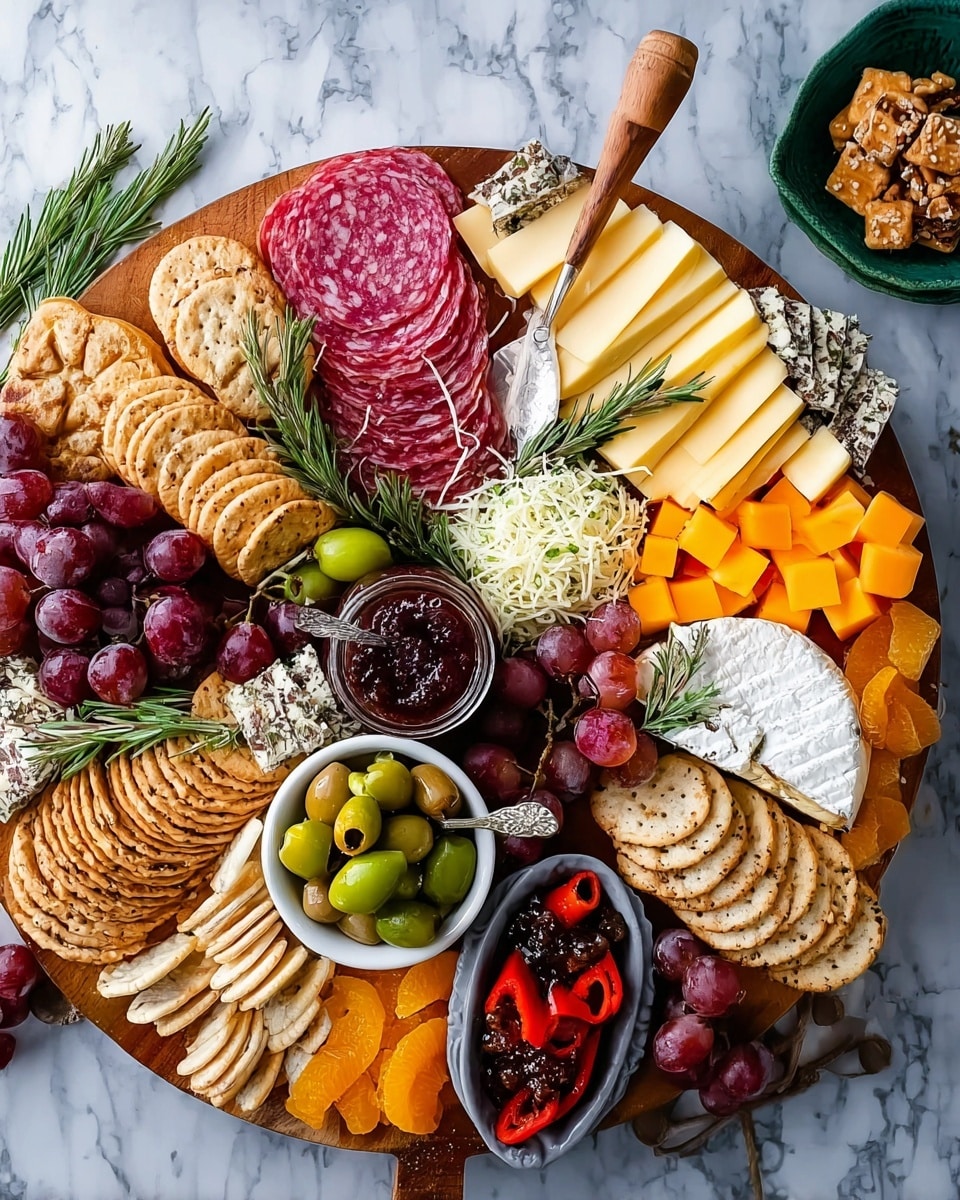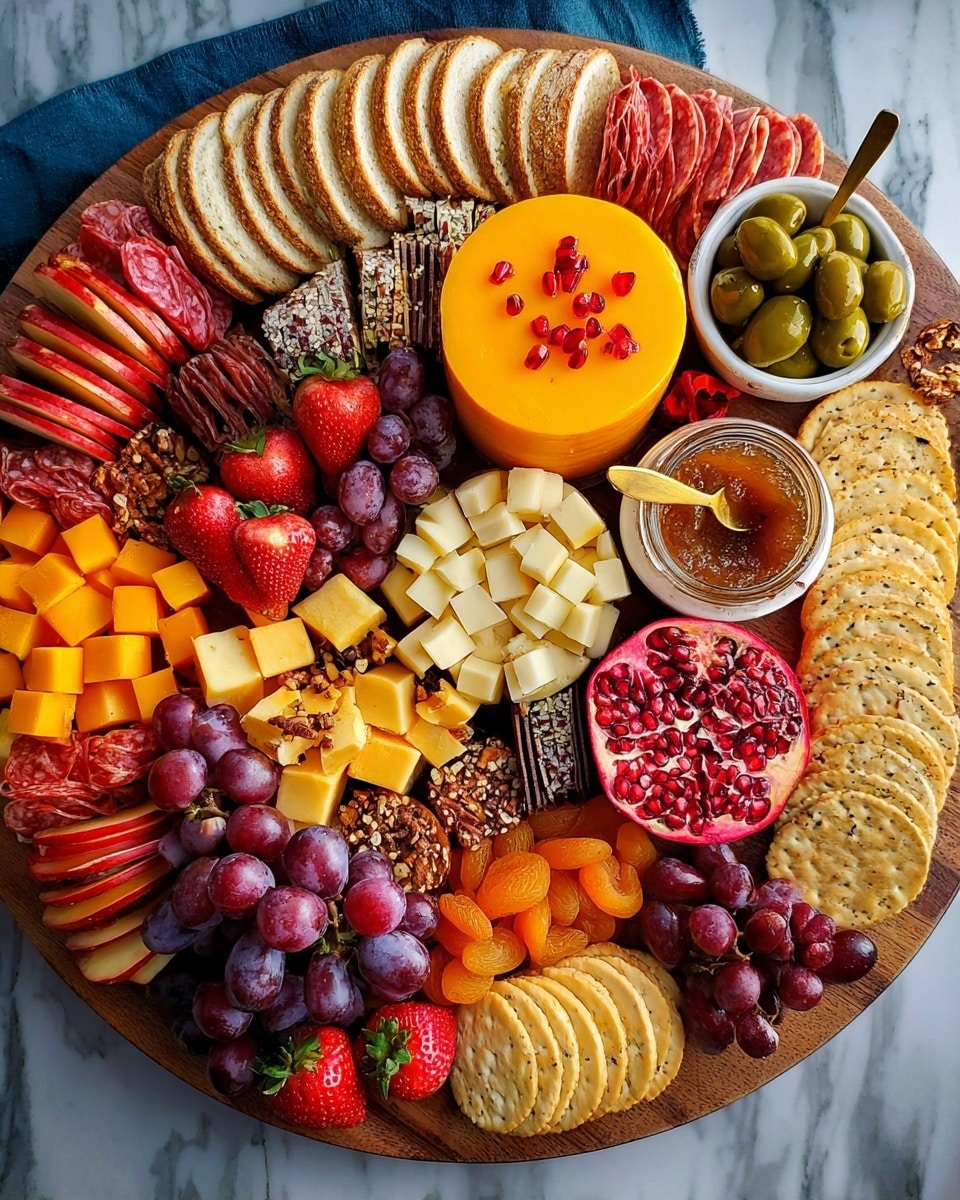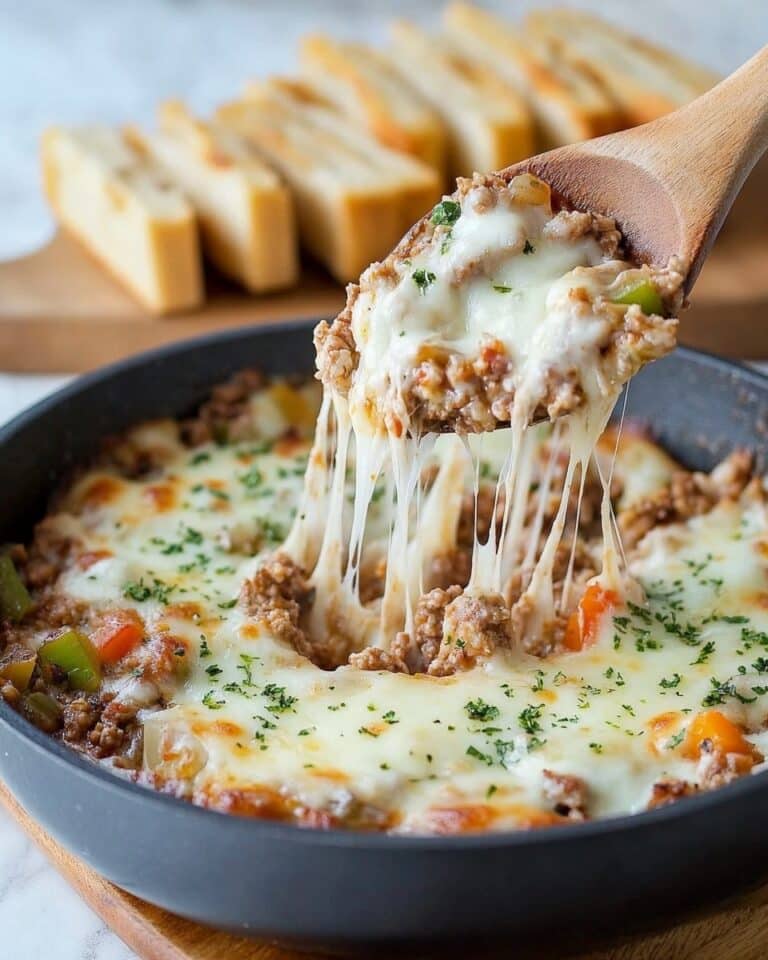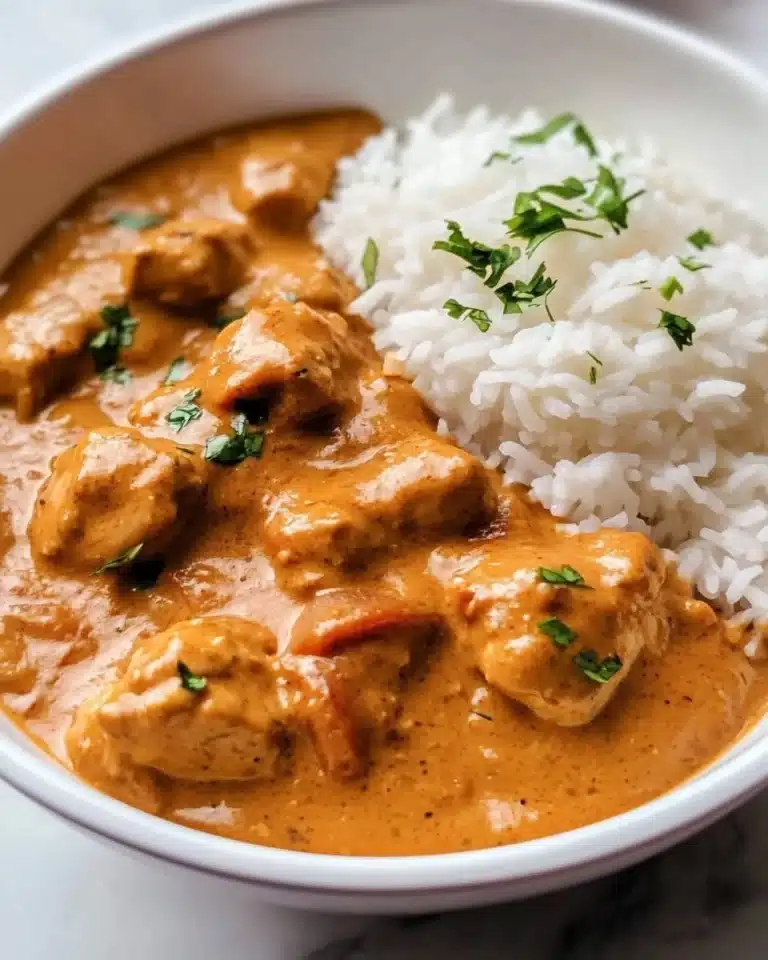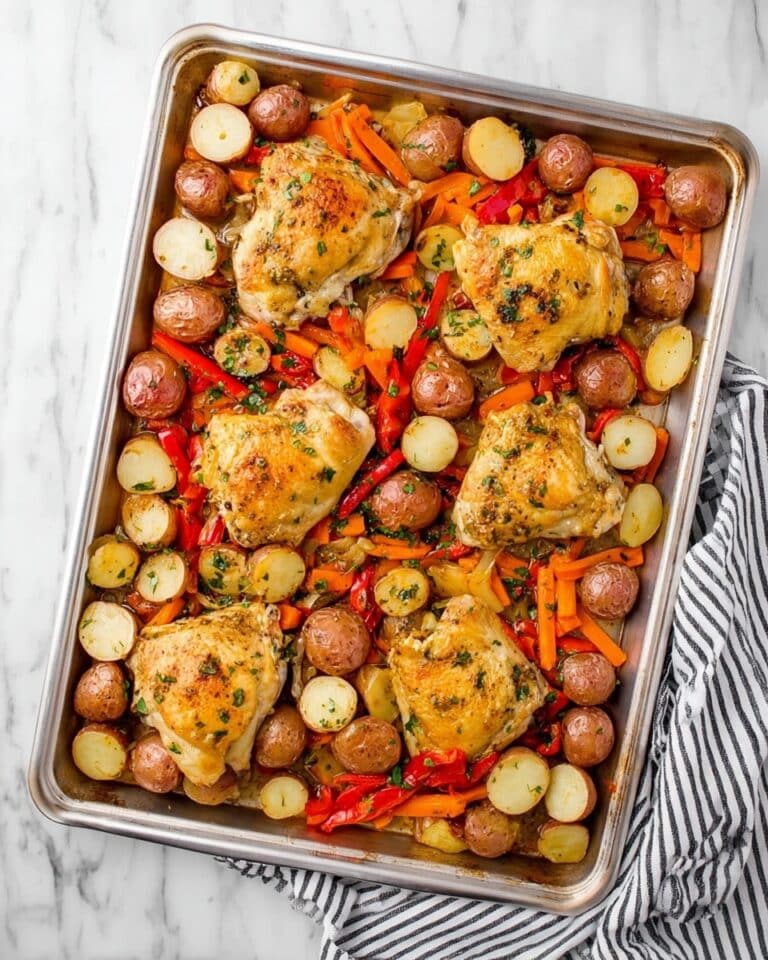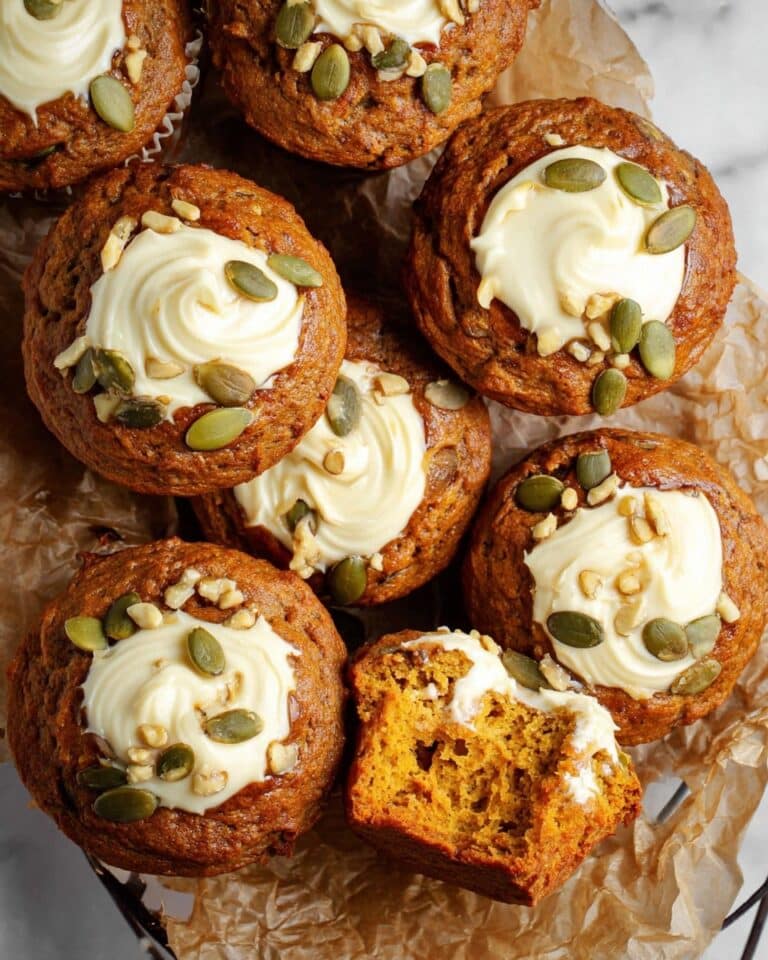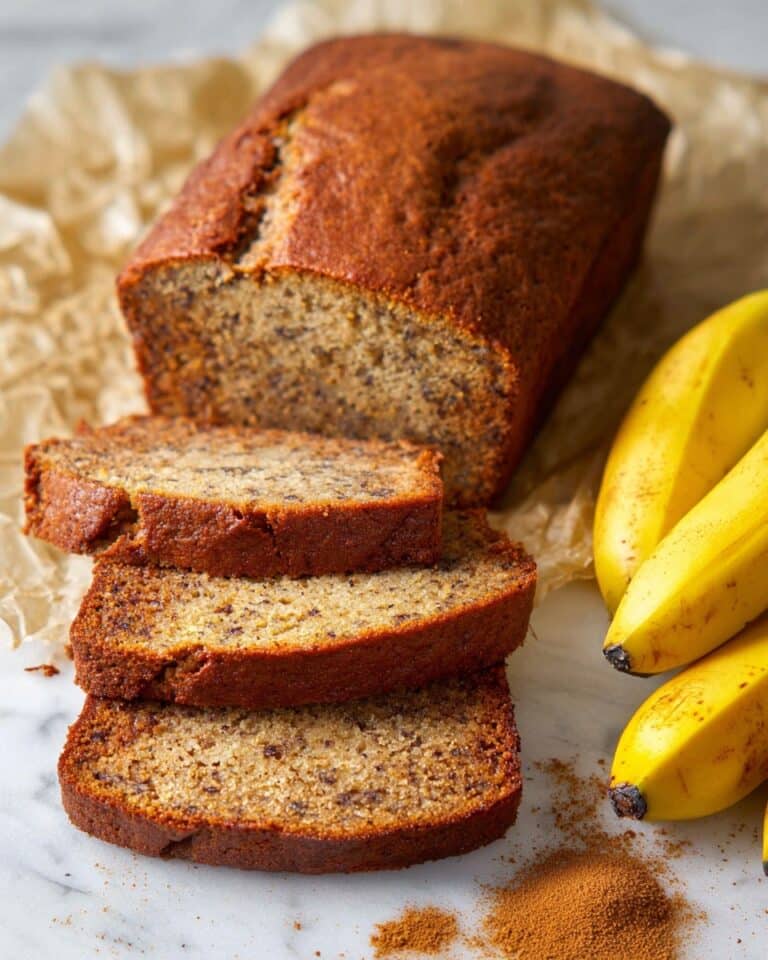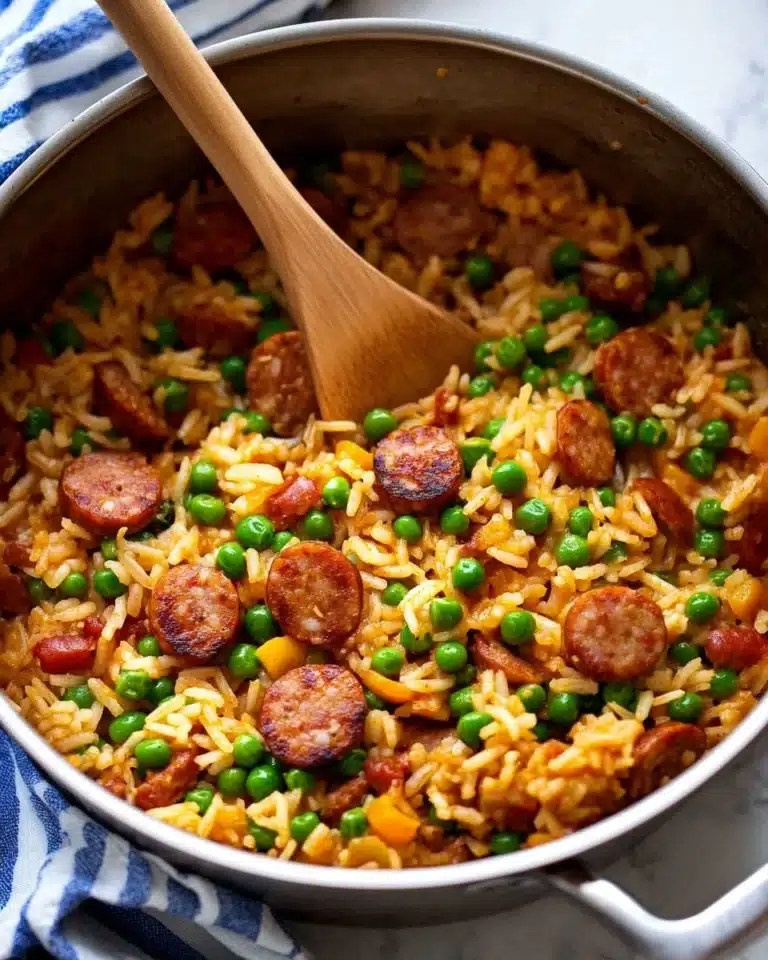There’s something effortlessly inviting about a beautifully arranged charcuterie board, and I absolutely love how this Charcuterie Board Recipe turns out every time I make it. Whether you’re hosting friends, enjoying a cozy night in, or just craving a fancy snack, this recipe is fan-freaking-tastic and surprisingly simple to pull together. Stick with me, and I’ll share all the little tricks I’ve learned that make it look stunning and taste incredible.
Why You’ll Love This Recipe
- Versatility for Any Occasion: Whether it’s a small gathering or a big party, you can easily scale this charcuterie board recipe to fit your needs.
- Delicious Flavor Combinations: The mix of cheeses, meats, nuts, and fruits creates a perfect balance of sweet, salty, and savory that delights every palate.
- Easy to Assemble With Practical Tips: I’ll walk you through simple folding and arranging tricks that make your board look professional and welcoming.
- Great for Beginners and Foodies Alike: Whether you’re new to charcuterie or a seasoned pro, this recipe has something to help you shine.
Ingredients You’ll Need
Choosing your ingredients is where the magic starts. I like to mix a variety of cheeses and meats with contrasting textures and flavors, plus nuts, fruits, and spreads for visual appeal and taste balance. When shopping, look for vibrant fresh produce and quality cured meats — they make all the difference.
- Hard Cheeses (manchego, cheddar, swiss, gouda, gruyere, parmesan): These give firmness and bite, providing a great base for the board’s flavor profile.
- Soft Cheeses (brie, triple cream, goat cheese, havarti, burrata, cream cheese with pepper jelly): I love how creamy cheeses pair beautifully with crunchy nuts or sweet spreads.
- Cured Meats (prosciutto, salami, ham, chorizo, capricola, soppressata): Look for a variety of textures from thin ribbons to chunkier slices to keep things interesting.
- Nuts (almonds, candied pecans, pistachios, cashews, walnuts, macadamia nuts): Nuts add crunch and a savory touch, plus candied nuts bring a lovely hint of sweetness.
- Briny, Pickled or Marinated Items (olives, cocktail onions, cornichons, dill pickles, pepperoncini, olive tapenade, bruschetta): These ingredients add contrast and help cut through richer flavors.
- Savory Dips and Spreads (whole grain mustard, hummus, ranch, balsamic dip, romesco): Perfect for dipping crackers or spreading on bread to add layers of flavor.
- Fresh Fruit and Berries (grapes, apples, pears, oranges, raspberries, blueberries, blackberries, strawberries): Fruits are not just beautiful — they bring freshness and natural sweetness.
- Dried Fruit (apricots, cherries, figs, pineapple, mango): A fabulous chewy texture and concentrated flavor that pairs so well with cheeses.
- Sweet Spreads (fig butter, orange marmalade, blackberry jam): These balance savory elements with a touch of indulgence I always crave.
- Chocolate (quality dark chocolate or chocolate-covered nuts): I love adding a few pieces for a surprising sweet finish at the end.
- Crackers (pita crackers, whole grain crackers, croccantini, or other favorites): Provides a crisp base for cheeses and meats.
- Toasted Baguettes or Mini Toasted Crackers: They bring a great crunchy texture and look classy on the board.
Variations
One of the best parts about this charcuterie board recipe is how easy it is to make your own. I like to switch things up depending on the season or my guests’ tastes—you’ll find that playing with textures and flavors keeps the board exciting every time.
- Vegetarian Variation: I’ve served this without cured meats by increasing the dips, adding grilled veggies, and including smoked cheeses—my meat-loving friends never even noticed!
- Seasonal Fruits and Nuts: In fall, swapping fresh grapes for sliced apples and adding roasted chestnuts brings cozy vibes, while summer means tons of berries and fresh figs.
- Spice It Up: Sometimes I add spicy chorizo or pepper jack cheese to give a bold kick that guests love.
- Gluten-Free Option: Swap crackers for gluten-free varieties and serve extra roasted nuts and fresh veggies for crunch.
How to Make Charcuterie Board Recipe
Step 1: Choose Your Board
Start by picking a board that fits the size of your gathering. I’ve used everything from wooden cutting boards to marble slabs or even slate plates. If you’re hosting a big group, multiple smaller boards look charming and are easier for guests to access. My tip? Lay down a lightly damp towel underneath a wooden board to keep it from sliding around as you arrange.
Step 2: Anchor the Board with Cheese
I learned early on that cheese is your anchor when building a charcuterie board. I usually pick odd numbers of cheeses — like 3, 5, or 7 — to create visual interest. Spread them out around the board to give your eyes places to land. Don’t forget to pre-slice or crumble a bit to make it easy for everyone to dig in right away.
Step 3: Fold and Fan the Meats
This is one of my favorite steps because it really enhances how the board looks. For meats like prosciutto, I fold them gently into loose, airy ribbons. For thicker slices like salami or soppressata, folding in half or quarters and fanning them out like a deck of cards keeps things accessible. I even made a quick video demo to show how I do this — folding correctly helps the meats look plenty but not overwhelming.
Step 4: Add Savory and Sweet Accompaniments
Next, sprinkle on your pickled items, olives, nuts, and dips. I like to group colors and flavors to highlight contrast — for example, placing mustard, briny olives, and nuts near sharp cheeses and salami. Then cluster sweet things like fruit, jams, and candied nuts around creamier cheeses like brie or goat cheese. This way, each bite can be customized with combos you love.
Step 5: Fill in Extra Spaces with Crackers and Garnishes
Finally, put down your crackers and toasted baguette slices, filling any gaps with more nuts or fruit. The goal is a balanced board with no empty spots but also not so crowded it feels cluttered. I find that layering different textures and colors is my secret for an inviting look that draws people in immediately.
Pro Tips for Making Charcuterie Board Recipe
- Use Odd Numbers for Visual Appeal: Group cheeses and meats in odd numbers — it creates a more natural, pleasing look.
- Pre-Slice and Portion: Help your guests by pre-slicing cheeses and portioning meats into bite-sized folds so they don’t have to struggle with knives.
- Contrast Colors and Textures: I always alternate dark and light items and vary textures to keep each bite interesting.
- Avoid Overcrowding: Leave a little breathing room on your board to keep it easy to grab from and visually balanced.
How to Serve Charcuterie Board Recipe
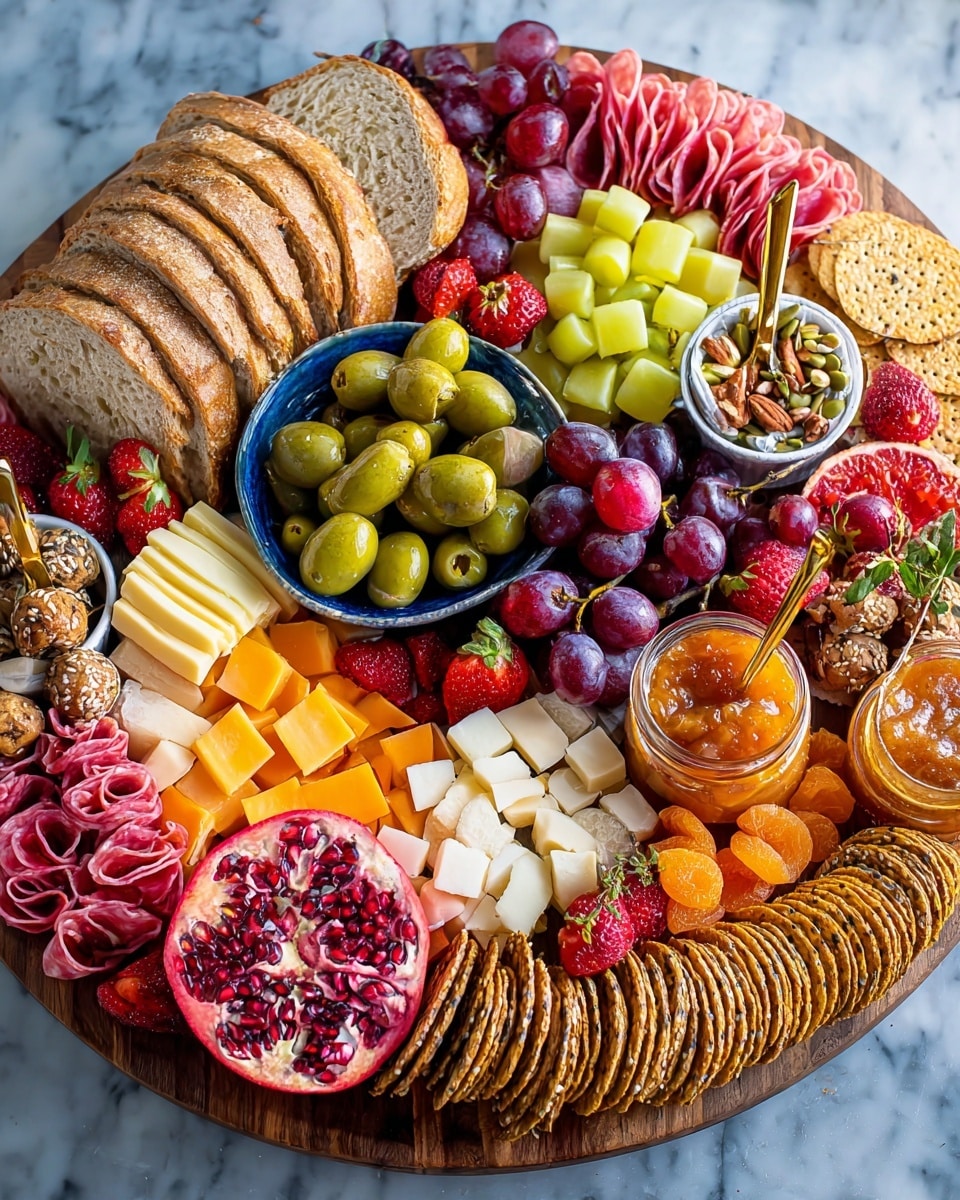
Garnishes
I like to finish my charcuterie boards with a sprinkle of fresh herbs like rosemary or thyme — they add fragrance and a burst of green. Edible flowers are also a lovely touch for festive occasions. A few lemon or orange wedges can brighten the look and offer a little zing, perfect if someone wants an extra pop of freshness.
Side Dishes
Though the charcuterie board is the star, I often serve it alongside a crisp green salad or roasted vegetables to add some warmth and balance. A light soup can also complement the cold board nicely, especially on chillier days.
Creative Ways to Present
For parties, I love using rustic wooden boards paired with artisan cloth napkins and small cheese knives for a cozy vibe. At holidays, themed boards with seasonal fruit and colorful accents wow guests. Sometimes, I turn the board into a “make your own snack” station, which is always a hit with kids and adults alike!
Make Ahead and Storage
Storing Leftovers
If you happen to have leftovers, I recommend wrapping cheeses separately in wax paper or parchment to help them breathe, and storing meats in airtight containers. Keep fresh fruits like grapes or apple slices in their own containers to avoid sogginess. I find that properly stored, everything stays fresh for a couple of days in the fridge.
Freezing
I typically don’t freeze assembled charcuterie boards because the fresh fruits and some cheeses don’t freeze well. However, if you have leftover cured meats, they usually freeze fine in airtight bags, though texture might change slightly. Nuts and dry items are best stored at room temperature.
Reheating
Since this is mostly a cold platter, reheating isn’t common. But if you have leftover toasted baguette slices, you can quickly warm them in the oven for a few minutes to bring back their crunch. Pair leftovers with fresh fruit or veggies to keep the experience enjoyable.
FAQs
-
What is the best way to fold cured meats for a charcuterie board?
Folding cured meats like salami or soppressata in halves or quarters and fanning them out makes them easy for guests to pick up and adds beautiful texture to your board. For thin slices like prosciutto, folding into loose ribbons keeps the meat airy and elegant.
-
Can I prepare a charcuterie board ahead of time?
You can prep many components ahead — slice cheeses, prepare fruits, and portion meats — then assemble the board about 30 minutes before serving to keep everything fresh and crisp.
-
What types of cheese work best on a charcuterie board?
A mix of hard and soft cheeses like cheddar, manchego, brie, goat cheese, and gouda offers a variety of flavors and textures that please most palates.
-
How do I choose accompaniments that pair well on the board?
Look for contrast: pair sharp cheeses with sweet jams, salty nuts with creamy cheeses, and briny pickles with mellow meats. Balancing these flavors makes each bite more exciting.
-
What’s the best way to store leftover charcuterie items?
Wrap cheeses in parchment or wax paper, store meats in sealed containers, and keep fruits separate in airtight containers in the fridge. This approach maintains freshness and flavor for a couple of days.
Final Thoughts
This charcuterie board recipe has become my go-to for turning any gathering into a special occasion. I love how it’s both simple to customize and impressive to present. Once you try layering flavors, textures, and colors like this, you’ll find it’s hard to go back to plain snacks. So grab your favorite board, pick your favorite ingredients, and get ready to bask in all the “wow”s from your family and friends — you’ve got this!
Print
Charcuterie Board Recipe
- Prep Time: 20 min
- Cook Time: 0 min
- Total Time: 20 min
- Yield: 8 servings
- Category: Appetizer
- Method: No-Cook
- Cuisine: American
Description
A Charcuterie Board is an elegant and customizable assortment of cheeses, cured meats, nuts, fruits, and accompaniments perfect for entertaining any group size or occasion. This no-cook recipe offers a flavorful balance of savory, sweet, and briny elements that create an inviting and visually stunning spread to enjoy with friends and family.
Ingredients
Cheeses
- Manchego, cheddar, swiss, gouda, gruyere, parmesan (3-7 types, as desired)
- Brie, triple cream, goat cheese, havarti, burrata, cream cheese with pepper jelly
- Optional: Blue cheese or gorgonzola
Cured Meats
- Prosciutto
- Salami
- Ham
- Chorizo
- Capricola
- Soppressata
Nuts
- Almonds
- Candied pecans
- Pistachio nuts
- Cashews
- Walnuts
- Macadamia nuts
Briny, Pickled or Marinated
- Olives
- Cocktail onions
- Cornichons
- Dill pickles
- Pepperoncini
- Olive tapenade or bruschetta
Savory Dips and Spreads
- Whole ground mustard
- Hummus
- Ranch
- Balsamic dip
- Romesco
Vegetables
- Cold cut veggies, if desired
Fresh Fruits and Berries
- Grapes
- Apples
- Pears
- Oranges
- Raspberries
- Blueberries
- Blackberries
- Strawberries
Dried Fruits
- Apricots
- Cherries
- Figs
- Pineapple
- Mango
Sweet Spreads
- Fig butter
- Orange marmalade
- Blackberry jam
Chocolate
- Quality dark chocolate pieces or chocolate-covered nuts
Crackers and Bread
- Pita crackers
- Whole grain crackers
- Croccantini
- Toasted baguettes or mini toast crackers
Instructions
- Choose Your Board: Select a board size suitable for your party. For larger groups, consider using multiple boards. Refer to additional resources for creative board ideas and options.
- Arrange the Cheeses: Start with the cheese as the anchor of your board. Select an odd number (3, 5, or 7) of cheeses and distribute them evenly around the board to create visual interest and balance.
- Fold and Add the Meats: Fold cured meats in half or twice and fan them out like a deck of cards so they are easy to pick up. Thin meats like prosciutto should be folded into light, airy ribbons. This technique helps display the meats attractively while keeping them accessible.
- Add Sweet and Savory Accompaniments: Place nuts, pickled items, olives, dips, and spreads thoughtfully around the board. Separate bright colors to make them stand out and pair flavors that complement each other—for example, savory items near sharp cheeses and sweet spreads near cream cheeses and brie.
- Fill in Gaps: Use crackers and toasted breads to fill empty spaces, then add leftover nuts and fruit to complete the presentation and provide variety.
Notes
- Creating a beautiful Charcuterie Board is easier than it seems with simple guidance on pairing and arrangement.
- Use a variety of textures and colors to make the board visually appealing and inviting.
- Feel free to customize based on dietary preferences, seasonal ingredients, or your guests’ favorites.
- Watch videos or tutorials for folding cured meats and arranging elements effectively if you are new to charcuterie boards.
Nutrition
- Serving Size: 1 serving
- Calories: 240 kcal
- Sugar: 7 g
- Sodium: 607 mg
- Fat: 16 g
- Saturated Fat: 8 g
- Unsaturated Fat: 7 g
- Trans Fat: 1 g
- Carbohydrates: 15 g
- Fiber: 1 g
- Protein: 10 g
- Cholesterol: 45 mg

